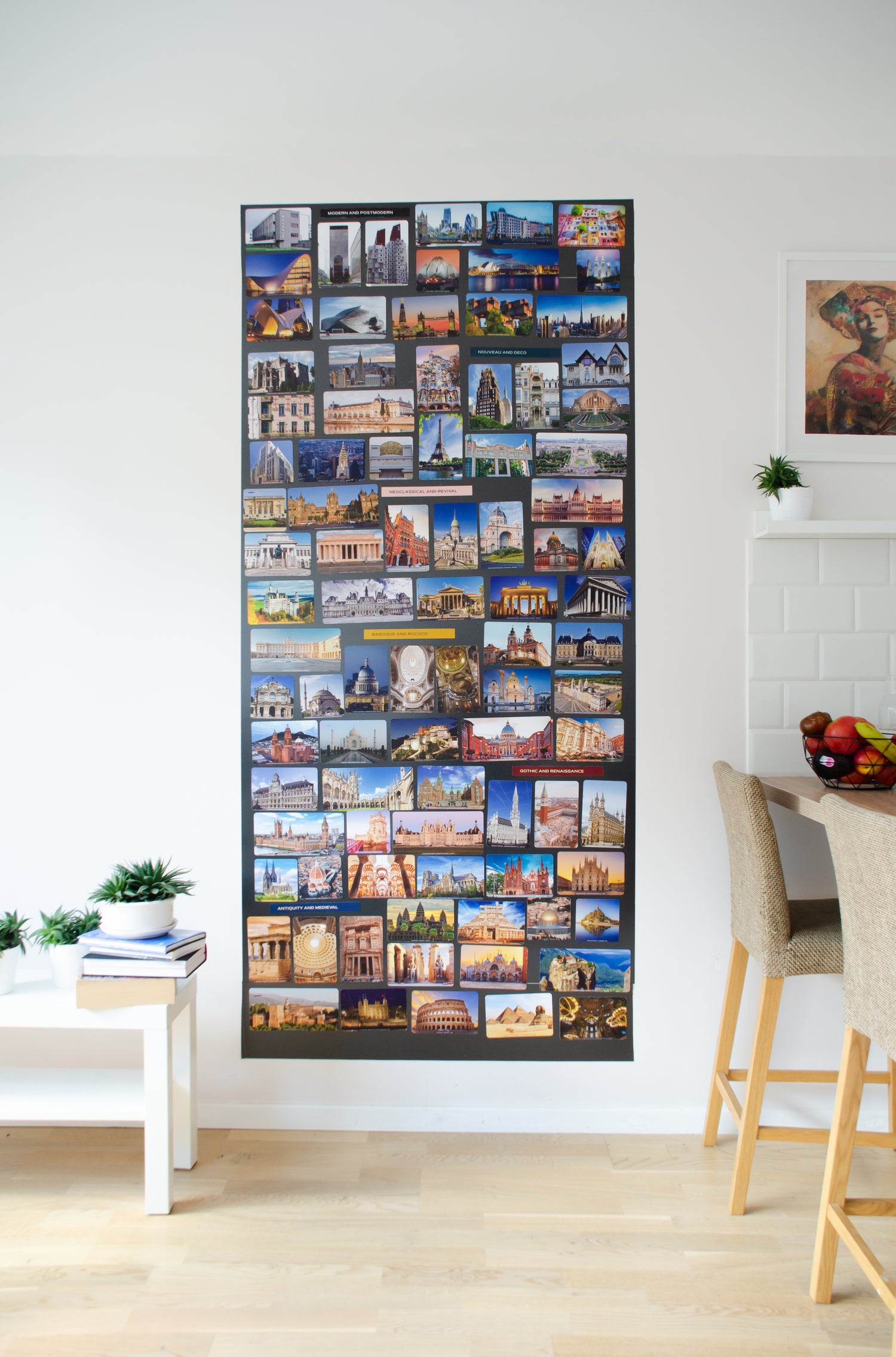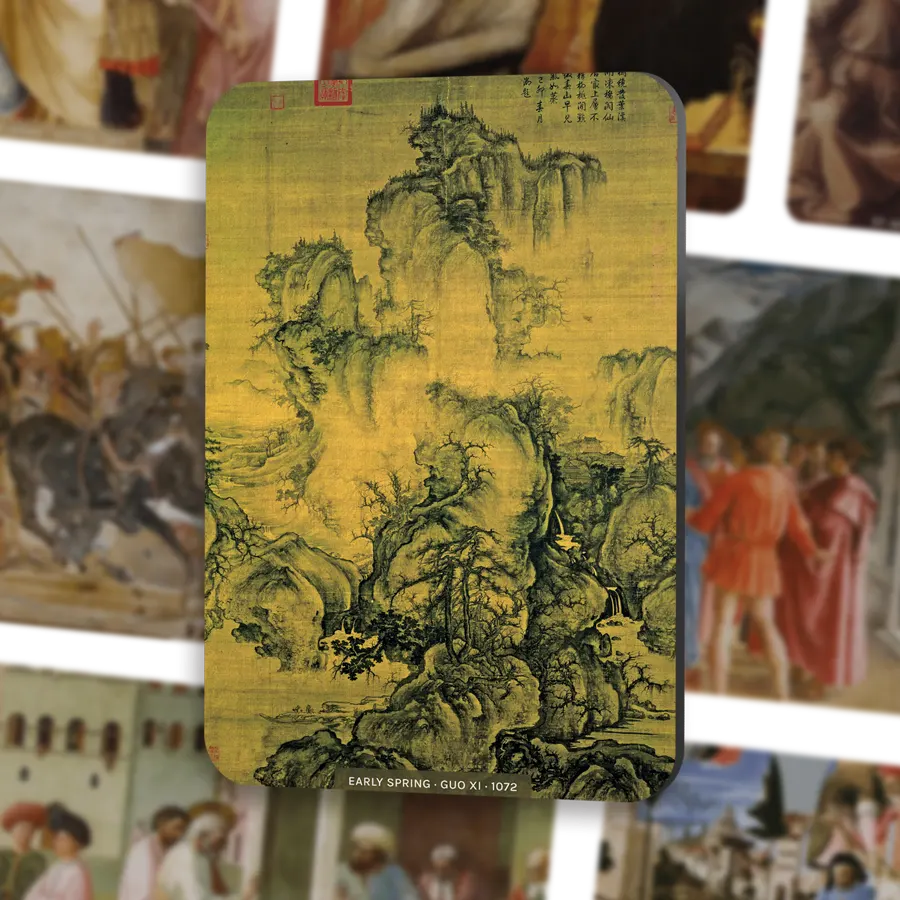The Baroque period, spanning from the 17th to the 18th century, was a vibrant and opulent era in the history of Western art. It is characterized by its ornate and dramatic style, which can be seen in both its art and architecture. The term "baroque" originated from the Portuguese word "barroco," meaning irregularly shaped pearl. In this article, we will delve into the fascinating world of Baroque art and architecture, exploring famous artists, iconic buildings, defining characteristics, and its influence on various art forms.
Famous Baroque Artists: Masters of the Baroque Period
Gian Lorenzo Bernini: The Sculptor Extraordinaire
One of the most celebrated Baroque artists is Gian Lorenzo Bernini. Born in 1598, he was an Italian sculptor and architect who contributed greatly to the Baroque movement. Bernini's sculptures were renowned for their dynamic and theatrical qualities. His ability to capture intense emotion through stone is evident in works like "The Ecstasy of Saint Teresa" and "Apollo and Daphne." Bernini's sculptures continue to astound art critics and enthusiasts alike.
Peter Paul Rubens: The Master of Baroque Painting
Another influential figure in the world of Baroque art is Peter Paul Rubens. Born in 1577 in Flanders, Rubens was a Flemish Baroque painter known for his grandiose and voluptuous style. His works often depicted mythological or historical subjects with vibrant colors and sensual figures. Rubens' masterpieces include "The Descent from the Cross" and "The Garden of Love," demonstrating his mastery of the Baroque painting style.
Caravaggio: The Revolutionary Baroque Painter
No discussion of Baroque art would be complete without mentioning Caravaggio. Michelangelo Merisi da Caravaggio, commonly known as Caravaggio, was an Italian Baroque painter who revolutionized the art world. His innovative use of light and shadow, known as chiaroscuro, brought a new level of realism and drama to his paintings. Caravaggio's works often depicted biblical scenes with a raw and intense emotional impact. "The Calling of St. Matthew" and "The Crucifixion of Saint Peter" are just a few examples of Caravaggio's influential works.
Baroque Architecture: Spectacular Buildings and Churches
St. Peter's Basilica: The Epitome of Baroque Architecture
St. Peter's Basilica in Vatican City is a prime example of Baroque architecture. Designed by prominent architects such as Gian Lorenzo Bernini and Carlo Maderno, this magnificent church showcases the grandeur and opulence of the Baroque style. Its facade, with its elaborate ornamentation and curved lines, exudes a sense of drama and majesty. The interior of St. Peter's Basilica is equally stunning, featuring intricate sculptures, frescoes, and gilded decorations.
Palace of Versailles: The Grandeur of French Baroque
The Palace of Versailles, located in France, is a UNESCO World Heritage site renowned for its exemplary French Baroque architecture. Built during the 17th century under the reign of Louis XIV, this immense palace is a symbol of absolute monarchy and the opulence of the French court. Its grand facades, meticulously manicured gardens, and lavish interiors are a testament to the extravagant style of the era.
St. Paul's Cathedral: A Marvel of English Baroque
In London, St. Paul's Cathedral stands as a majestic example of English Baroque architecture. Designed by Sir Christopher Wren in the late 17th century, this iconic cathedral showcases the elegance and symmetry characteristic of the English Baroque style. With its impressive dome, intricate carvings, and imposing presence, St. Paul's Cathedral is a beloved landmark and a testament to the beauty of Baroque architecture.
Characteristics of Baroque Art: Ornate and Dramatic
Dramatic Use of Light and Shadow: Chiaroscuro
One of the defining characteristics of Baroque art is the dramatic use of light and shadow, also known as chiaroscuro. This technique, popularized by Caravaggio, creates a strong contrast between areas of light and darkness, adding depth and intensity to the artwork. Chiaroscuro not only accentuates the three-dimensionality of the subjects but also evokes a sense of drama and emotion.
Dynamic and Fluid Motion: Diagonal Lines and Curves
Baroque art is known for its dynamic and fluid motion, often achieved through the use of diagonal lines and curves. These lines create a sense of movement and energy, drawing the viewer's eye across the canvas. The use of curved lines contributes to the overall sense of drama and theatricality that is characteristic of Baroque art.
Opulence and Grandeur: Elaborate Ornaments and Decoration
Ornate and elaborate ornaments are another hallmark of the Baroque style. Baroque art is often characterized by its opulence and grandeur, with intricate details and embellishments adorning paintings and sculptures. These decorative elements, such as scrolls, cherubs, and floral motifs, enhance the overall richness and sumptuousness of the artwork, reflecting the luxurious tastes of the Baroque period.
The Baroque Era: A Fusion of Art and Music
Baroque Music: Bach, Vivaldi, and Handel
The Baroque era was not only a time of great artistic expression but also a period of significant musical achievements. Renowned composers such as Johann Sebastian Bach, Antonio Vivaldi, and George Frideric Handel emerged during this time, leaving a lasting impact on the world of music. Baroque music is characterized by its intricate melodies, elaborate ornamentation, and the use of instruments such as the harpsichord and the violin.
Baroque Opera: The Birth of a Theatrical Art Form
Baroque opera originated in Italy and quickly became a popular form of entertainment throughout Europe. This new art form combined music, singing, drama, and elaborate staging to create a theatrical spectacle. Composers such as Claudio Monteverdi and Henry Purcell contributed to the development of opera, paving the way for future operatic masterpieces.
Baroque Dance: Elegant and Graceful Movements
Baroque dance, characterized by its elegance and grace, was an integral part of the Baroque era. The dance movements, performed in elaborate costumes and accompanied by music, added a visual element to the music and theater performances. Ballet, in particular, flourished during this period, with choreographers like Jean-Baptiste Lully and Pierre Beauchamp shaping the art form.
Baroque Art Today: Contemporary Interpretations
Baroque-Inspired Fashion: Opulent and Dramatic Designs
Baroque art continues to inspire and influence contemporary fashion designers. Opulent and dramatic designs, reminiscent of the Baroque period, can be seen on fashion runways and red carpets. Intricate embroidery, rich fabrics, and ornate details are often incorporated into garments, creating a sense of luxury and indulgence.
Baroque-Influenced Interior Design: Luxurious and Exquisite Spaces
The lavishness and beauty of Baroque art and architecture have also found their way into interior design. Baroque-inspired interiors are characterized by their luxurious materials, intricate patterns, and ornamental details. These spaces exude a sense of grandeur and elegance, providing a visually stunning environment.
Baroque-Inspired Photography: Capturing the Essence of Baroque
Photographers today also draw inspiration from the Baroque era, capturing the essence of its art and architecture through their lens. They use lighting techniques to create dramatic effects, emulate the intricate details of Baroque ornamentation, and capture the dynamic energy that characterized the period. Through Baroque-inspired photography, they invite us to appreciate the beauty and richness of this historical era.
Learn more about art and Baroque through Baroque educational magnetic cards.
Q: What is baroque art and architecture?
A: Baroque art and architecture refers to a style that originated in the 17th century and is known for its grandeur, ornate details, and dramatic elements. It is characterized by elaborate decorations, exaggerated forms, and a sense of movement.
Q: What are the characteristics of baroque art?
A: Baroque art is known for its ornate and intricate details, dramatic use of light and shadow, exaggerated forms, and a sense of movement. It often incorporates rich colors, complex compositions, and emotional intensity.
Q: How is baroque art different from renaissance art?
A: While both the Renaissance and the Baroque period are known for their advancements in art and architecture, they have distinct differences. Renaissance art focused on balance, harmony, and the realistic representation of human figures, whereas Baroque art emphasized drama, emotion, and a more dynamic approach to composition.
Q: Do contemporary art forms incorporate baroque elements?
A: Yes, contemporary art often draws inspiration from various art movements, including the baroque. Some artists incorporate baroque elements such as dramatic lighting, grand compositions, and ornate details into their work, giving it a modern twist.
Q: What are some famous examples of baroque artwork?
A: Some famous examples of baroque artwork include Gian Lorenzo Bernini's sculptures, such as "The Ecstasy of Saint Teresa," Caravaggio's paintings, such as "The Calling of Saint Matthew," and the architectural works of Francesco Borromini, such as the Church of Sant'Ivo alla Sapienza.
Q: How did baroque art influence major art movements?
A: Baroque art had a significant influence on later art movements, such as Rococo and Neoclassicism. Its dramatic style and emphasis on emotional expression paved the way for new approaches to art and architecture.
Q: What are some notable baroque architectural features?
A: Baroque architecture is known for its elaborate decorations, grand facades, and intricate details. Some notable features include domes, columns, ornamentation, and the use of dramatic lighting through windows and frescoes.
Q: How did baroque churches become a prominent feature of the period?
A: Baroque churches became a prominent feature of the period due to the Catholic Church's desire to inspire awe and convey religious messages through grand and opulent architecture. They were often designed to capture the attention of the faithful and create a sense of spiritual grandeur.
Q: What is the origin of the term "baroque"?
A: The term "baroque" originated from the Portuguese word "barroco," which means an irregularly shaped pearl. It was initially used in a derogatory manner to describe art and architecture that deviated from the established norms of the time.




